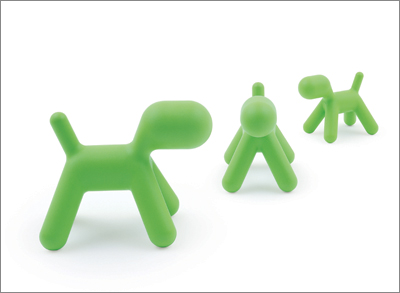|
|
||
|
An engaging retrospective at Helsinki’s Design Museum captures the humour and inventiveness of the designer who furnished the 1960s A recently opened exhibition at the Design Museum in Helsinki offers up the most extensive overview to date of the career of celebrated Finnish designer, Eero Aarnio. What its five thematic sections – Mind, Time, Artefacts, Production and Process – illustrate is the extent to which play, humour and material inquisitiveness have been the driving forces behind much of Aarnio’s work since he first established his own studio in 1962.
Ball chair A simple, striking exhibition design of white metal grids and foam plinths by Ville Kokkonen and Florencia Colombo repeats throughout the exhibition, used at different scales as needed to set off Aarnio’s colourful work. While considerable attention is given to Aarnio’s best-known pieces, lesser-known histories of those designs are revealed through the exhibition’s many interesting anecdotes and objects from Aarnio’s archive. In the ‘Mind’ room, for example, an accordion-folded piece of paper frames a series of photographs from 1964 that depict Pirkko, Aarnio’s wife of 60 years, sitting in a Coca-Cola branded Ball chair, sipping stylishly from a glass bottle of Coke.
Sketch from 1956 Displaying a nous for advertising that would serve him well throughout his long career, Aarnio attempted to combat the early lack of interest in the Ball chair by self-staging an advertising campaign for Coke and sending the photographs to the managing director of the company’s Finnish subsidiary. The director loved the mock-up, and although the campaign was never realised it hinted at the advertising fervour that would come to surround the Ball and Bubble chairs. Their later appearances in countless adverts, magazine covers, films and TV shows helped to cement their status as symbols of the 1960s look. |
Words Crystal Bennes
Above: Aarnio’s daughers in Bubble chairs
Eero Aarnio |
|
|
||
|
Ball chair |
||
|
As Aarnio’s most famous designs – the Ball and Bubble chairs, the Tomato chair (1971), the Double Bubble lamp (2001) – have achieved huge visibility, the most engaging aspects of the exhibition are those that focus on less-publicised elements of Aarnio’s work. I found myself much impressed by the solidity and detailing of the steel components of the Silver armchair, produced for the now-defunct Mobel Italia in 1973 (a brief respite from working in plastics, supposedly prompted by the 1973 oil crisis), as well as UPO-23, a fun, injection-moulded plastic chair in three stacked pieces from 1972.
Double Bubble lamp While the ‘Production’ room features videos of factory processes – including fascinating clips of the making of the injection-moulded Evergreen Watering Can and the heat-forming of acrylic sheets into the Bubble chair’s distinctive spherical shape – it’s the ‘Process’ room that most delights. Here, one really gets the sense of Aarnio as a creative force of nature: a one-man invention machine, who needs nothing other than a piece of paper and a pencil to bring his imagination to life. One lovely sequence shows the Pony chair (1973) from its original 1:1 drawing to a photograph of Aarnio working up a 1:1 model in Styrofoam and modelling clay in his back garden. It’s but one clear demonstration of his intuitive, hands-on approach, which reveals itself throughout the geometric lines and playful temperament of all of his works.
Puppy chair for children |
||






















